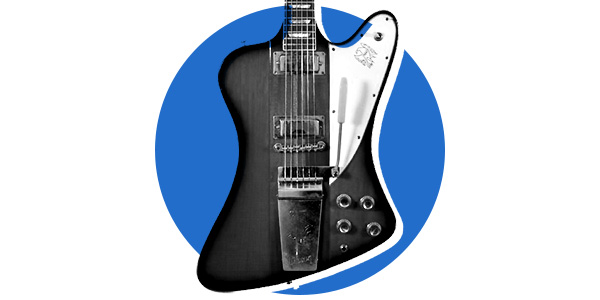Gibson launched the Firebird in 1963 with a unique "reversed" body style that echoed the shape of a '60s sports car. The Firebird would be embraced by a number of Southern and Blues Rock players including Eric Clapton, Allen Collins of Lynyrd Skynyrd, and most famously, Johnny Winter.
But Gibson didn't just launch one Firebird. It launched four: the Firebird I, the Firebird III, the Firebird V, and the Firebird VII.
While all four Firebirds shared a body shape and neck-thru-body construction (a first for Gibson), each model varied in its pickup and hardware configuration.

The Firebird I featured one mini-humbucker pickup, an unbound fingerboard with dot inlays, and a combination stopbar bridge/tailpiece (though a spring tremolo was available via special order).

The Firebird III used two mini-humbuckers, and came standard with a spring tremolo tailpiece as well as a bound fingerboard.

The Firebird V also used two mini-humbuckers, but sported a Tune-o-matic bridge, deluxe vibrato tailpiece, and block inlays.

The Firebird VII was similar to the Firebird V but with higher-end appointments including gold-plated hardware, an ebony fingerboard, and a third pickup.
If sorting out these four distinct models out wasn't enough, Gibson radically changed the Firebird in mid-1965 by flipping the original body shape upside-down. What's especially confusing is that collectors now refer to the original Firebird as the "reversed" Firebird due its non-conventional orientation with a treble-side horn sticking out further than its upper horn. The more conventional Firebirds from 1965 and onwards are referred to as "non-reversed" even though they were created by physically reversing the original shape.
Gibson also briefly produced a 12-string Firebird V in 1966 and 1967, and that's even to mention the series' counterpart bass: the Thunderbird.
